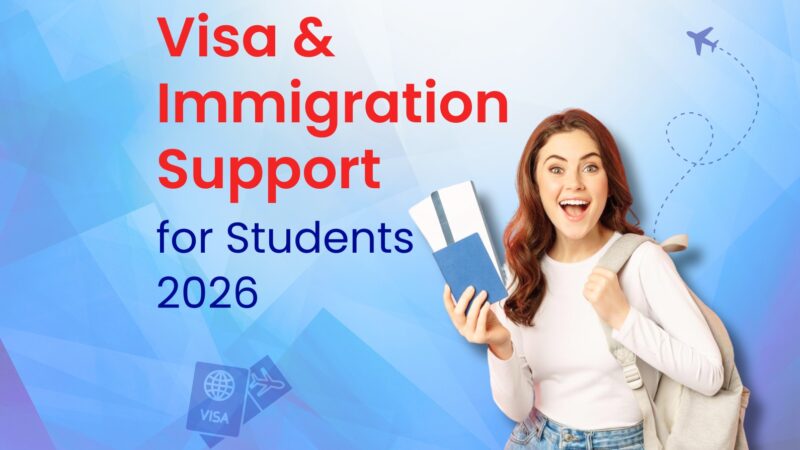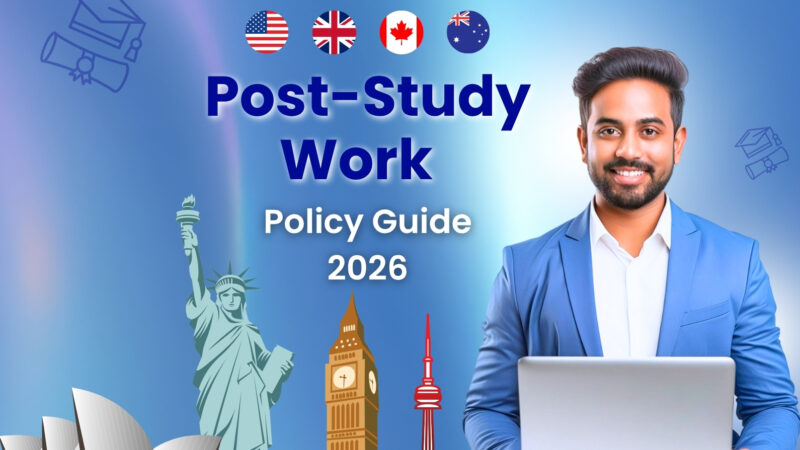A Handy Guide on CPT in the US for International Students
Did you know that F-1 students can explore practical training opportunities in the US that are compulsory for their course completion? Practical training offers work experience, enhancing skills students acquire from their academics. The mandatory practical training requirement is met with the help of the Curricular Practical Training (CPT) opportunity, which this blog will discuss in detail.
What is a CPT Visa?
A CPT (Curricular Practical Training) visa is not a visa per se. It is a type of authorization that allows F-1 visa students in the United States to gain practical work experience related to their field of study. It could be paid or unpaid internships or full or part-time work that is directly related to the student’s field of study.
The CPT program must be an integral part of your study in the US. Enrolling on a CPT program would not cancel your OPT (Optional Practical Training) opportunity, provided it is of less than 12 months. If your CPT is up to or more than 12 months, you will not be eligible to apply for an OPT after completing your studies.
On and Off Campus work
With CPT, your work can be either on-campus or off-campus. Both types of work count towards your required practical experience to complete your course.
Benefits of CPT
- Immediate practical work experience: CPT provides a chance for you to gain practical experience while you study in the US. With the experience you gain from CPT, you can apply for professional prospects after graduation.
- Networking opportunities: CPT is your opportunity to network with top professionals in your field. In the US, your network broadens to include talented individuals from diverse parts of the world.
- Earn while studying: With CPT, you can earn income by taking up paid jobs in the US. However, this is not applicable to those who opt for unpaid work.
CPT Visa Eligibility
For CPT programs, it is crucial to follow the prescribed guidelines. Given below are the eligibility requirements for CPT in the US:
- Be an F-1 student in the US
- Get an offer letter for training
- Have proof of English proficiency
- Study for a course with the requirement of practical training in its curriculum
- Be authorized by the DSO (Designated School Official) for CPT
Documents Required for a CPT Visa
The DSO takes care of the CPT authorization for students in the US. For that, the following documents are typically required:
| Form I-20 | Academic Transcripts |
| English Proficiency Certificate | Offer Letter for Job/ Training |
| Passport Copy | Visa Documents |
How to Apply for CPT in the US?
Here’s how an international student gets CPT authorization from the DSO:
- Request for CPT via the school’s website.
- The DSO will review the request and check the student’s eligibility.
- If the student is eligible, the DSO will authorize the CPT in SEVIS (Student and Exchange Visitor Information System) for a particular employer.
- The DSO will print and sign Form I-20 with CPT authorization.
CPT vs OPT in the US
Often, students are confused between CPT and OPT. The major difference is that CPT is a compulsory academic requirement for your program completion, while OPT is optional. If your CPT takes 12 months, it is counted towards your OPT experience in the US.
The table below compares CPT and OPT to resolve the confusion:
| Parameters | CPT | OPT |
| Purpose | Completing the academic program requires practical training. | Gaining practical experience after studying for professional or personal achievements. |
| Academic Importance | Mandatory to complete the study | Not mandatory to complete the study |
| Authorization by | Academic department | USCIS (US Citizenship & Immigration Services) |
| Validity | 12 months | 12 – 24 months |
| Employment Authorization Document (EAD) | Not applicable | Students get Employment Authorization Document (EAD) |
| Application fee | None | 410 USD |
| Work time | 20 – 40 hours a week | 20 hours a week or full-time |
Conclusion
Curricular Practical Training (CPT) in the US allows students to gain the required practical experience while studying with an F-1 visa in the US. Students need authorization from their DSO for CPT programs that can be 20 – 40 hours a week. However, unlike OPT, the CPT can’t be your path to permanent residency unless your CPT experience is counted towards OPT.
Learning about the CPT visa could be your first step. Get complete guidance from Nomad Credit’s expert counselors to fulfil your plans. Access unlimited support in US admission, SOP, personalized education loan options, and the student visa at zero cost. Soar high with Nomad Credit, your study abroad partner.

Frequently Asked Questions
How long is a CPT visa valid in the US?
A CPT authorization is valid for 12 months in the US. To work more than 12 months in the US, students may apply for Optional Practical Training (OPT), which allows them 12 more months to stay in the US.
Can I request a CPT visa if my program doesn’t have one?
The CPT is part of the academic program and does not require an external work visa other than the F-1 visa. Students can’t request CPT if their course does not offer it.
Are CPT programs paid?
The CPT programs can be paid or unpaid. Depending on your preference, you can search for suitable CPT programs in the US.
Can J-1 students participate in CPT programs?
Only F-1 students are allowed to take part in CPT programs. J-1 students are in exchange programs and do not qualify for practical training in the US.
How many times can I participate in CPT programs?
Multiple times. There is no limit to whether a student can participate in CPT programs during their graduation. However, the maximum working hours must be 12 hours (or 40 in extreme cases), and the program should not be more than 12 months.
Do I need a job offer to apply for CPT?
Yes. CPT authorization is possible only if the student submits an offer letter that specifies the job role, working hours, location, and other details.
Book A Free Counseling
Related Blogs
Want to connect with
Our Experts?
We provide keep one to one counselling to
Study Abroad Aspirants









